An Overview of TOGO
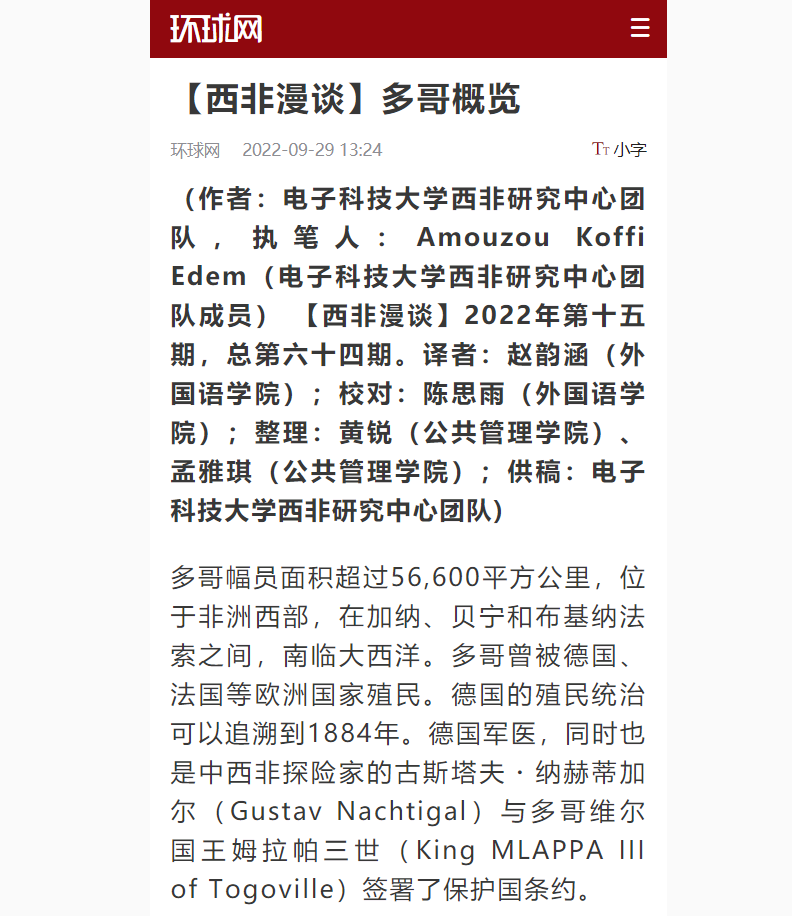
--本文原刊载于环球网(Huanqiu.com)“西非漫谈”栏目
链接:http://opinion.huanqiu.com/article/49qnuWuWmoB
【西非漫谈】多哥概览
(作者:电子科技大学西非研究中心团队,执笔人:Amouzou Koffi Edem(电子科技大学西非研究中心团队成员) 【西非漫谈】2022年第十五期,总第六十四期。译者:赵韵涵(外国语学院);校对:陈思雨(外国语学院);整理:黄锐(公共管理学院)、孟雅琪(公共管理学院);供稿:电子科技大学西非研究中心团队)
Introduction
Spread over 56600 km2, TOGO is a country located in West Africa between GHANA, BENIN, and BURKINA FASO, with an opening on the Atlantic Ocean in the south. Like most African countries, Togo has also been colonized by Europe, notably by Germany and France. German colonization dates back to 1884 with the signing of a protectorate treaty between Gustav Nachtigal (German military surgeon and explorer of Central and West Africa) and King MLAPPA III of Togoville.
The name Togo was given as early as 1884 by the Germans; it was one of the first three communities with which Nachtigal signed the protectorate treaties. The chance of the African toponymy wants that Togo means (to = water, go= shore) edge of the water or the lagoon [1]. The colony was named TOGOLAND until 1905, and Togo from 1905 onward. During the German colonization, the administrative capital was established in BAGUIDA (until 1886), then in ZEBBE, since 1897 LOME.
German colonization ended in 1918 with the defeat of Berlin in the First World War. The former German colonies were entrusted to England and France. The western part of Togo (Western Togoland) will be occupied by England and attached later to GHANA. The eastern part of Togo was entrusted to France until the independence of Togo on April 27, 1960. The history of the current settlement of Togo makes it possible to go up sometimes to the remote origin of the ethnic group. Thus, the thirty or so Togolese ethnic groups can be identified in two main categories: those who were there before and those who arrived after the end of the fifteenth century of our era.
All these populations would come from two great currents of migrations coming one from the East, from the banks of the Niger, the other from the North, from the plateaus of Burkina-Faso. Togo has more than 8 million inhabitants according to the last general census of the population. The official language is French, the national languages are Ewe and Kabye [5]. Approximately 70% of the inhabitants are practicing traditional religions, 20% are Christians and 10% are Muslims. The Togolese diaspora is mainly in Africa, Europe, and North America. The country has offshore oil and also marble, attapulgite, manganese, limestone, iron, peat, gold, and uranium, but above all a very important phosphate deposit which represents more than 40% of export earnings. Togo is the fifth largest phosphate producer in the world [2].
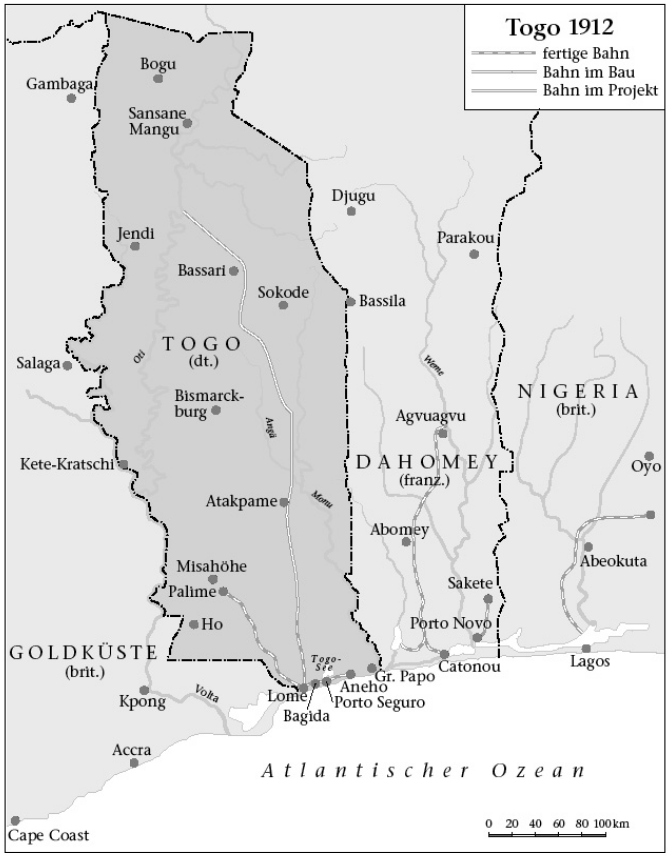
GERMAN TOGOLAND (1884-1914) Source: HABERMAS REBEKKA “Skandal in Togo: Ein Kapitel deutscher Kolonialherrschaft”, 2016
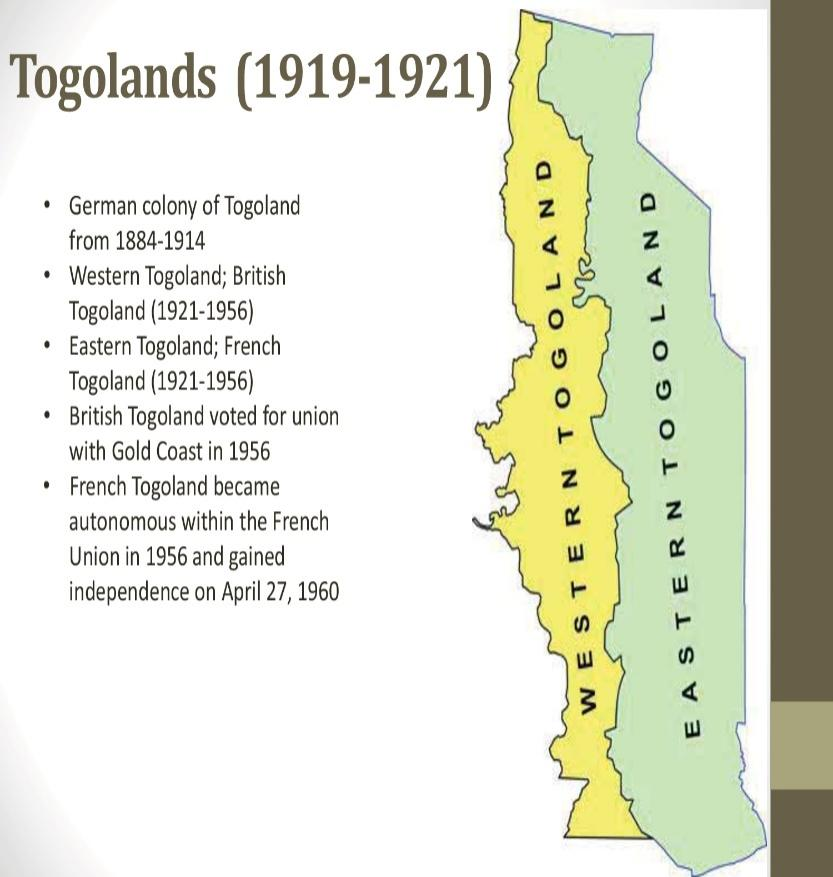
TOGOLANDS (1919-1921), Source: https://www.docslides.com/slides/
political-history-of-togo-djifa-kothor-center-for-african-studies.html, University of Illinois at Urbana-Champaign
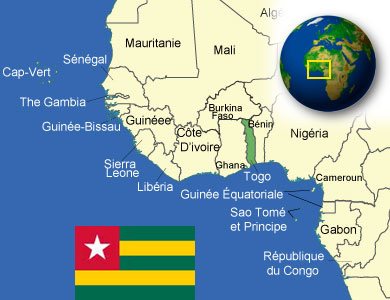
TOGO from 1960 to nowadays, Source: https://yananga.org/vs-togo/carte-togo-2-2/
The People and Culture
The majority of the Togolese population is African. Togo has 41 ethnic groups. The largest ethnic group, the Adja-Ewe, represents 44% of the population and lives in the southern part of Togo. Then we have the Kabyè-Tem (26.7%), the Para-Gourma (16.1%), the Akposso-Akébou (4%) and the Ana-Ifé (3.3%). Togo is a country with a very dense culture. A diversity of languages. But the most used languages are Ewe and Kabyé. In terms of cuisine, Togo's culinary art is also rich. Many dishes are made with corn. The most common dishes are corn paste, rice, and Fufu. These dishes are accompanied by vegetable or peanut sauces. As far as drinks are concerned, Togo has its specialties. Meals are accompanied by Sadabi or Déha which are local drinks made from palm. In the south of Togo, one meets the tchoukoutou, Tchakpalo for the north of Togo. The traditional dances and festivals of Togo are numerous. The rhythms vary from north to south [3].
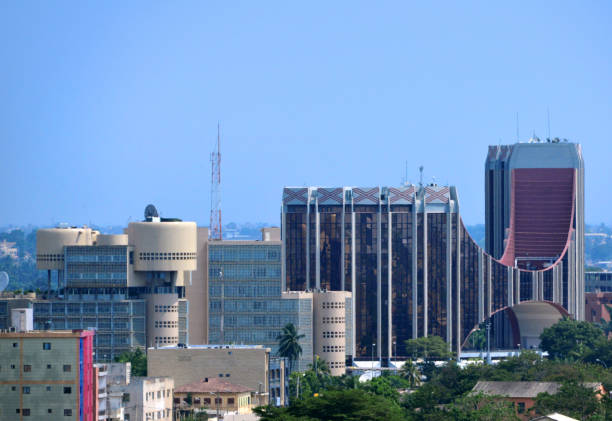
Source : https://www.istockphoto.com/photos/lome-city.
The Economic Development
In purchasing power parity, the Togo’s economy has a GDP of $1,400 per capita. A majority of the country's workforce is employed in agriculture, which produces 42% of its wealth. Industrial and commercial activity is concentrated in Lomé, the capital. As a result of progress in the services sector in 2021, GDP growth rebounded to 5.3 percent in 2022 from 1.8 percent during the COVID-19 pandemic in 2020. The recovery has been driven largely by household spending as well as public and private investment. Public investment is expected to remain strong in 2022 due to the implementation of the "Togo Roadmap 2020-2025", gradually declining in favor of private investment over the next few years. Increasing food and oil prices continue to raise concerns about inflation. The current account deficit widened to 3.2 percent in 2021, more than double its 2020 level. The current account deficit was financed by grants and concessional loans. The fiscal deficit remained high, at 6.5 percent of GDP in 2021, causing public debt to increase from 60.3 percent of GDP in 2020 to 64.7 percent in 2021 [4].
Agriculture
Togo is 25% cultivated (ranging from small fields of millet in the north of the country to the clay soils of southern Togo, which produce sweet potatoes and corn) and has achieved almost complete food self-sufficiency. Agriculture provides a large part of the food security of the Togolese, with the rural sector still supporting about 80% of the population. A wide variety of crops are grown: millet, sorghum, corn, cassava, yams, cocoa, coffee, and shea butter. Cotton is the main industrial crop and the main agricultural export. It is also noticeable that small and medium-sized farms dominate. In addition, high densities in Togo have led to an increased need for wood fuel, which is the cause of one of the highest rates of deforestation in Africa.
In March 2006, there was a push for the industrialization of agriculture by the Togolese government, which began (again) to motorize agriculture, which had previously been practiced by farmers using manual power with traditional tools[2]. Several agricultural projects are being developed to revolutionize the agricultural sector. One example is the Djagblé Plain Rural Development Project. Given the importance of agriculture in Togo's economy and the constraints that hinder its development, the Government, together with its partners, is trying to revive this agricultural sector in general and food production in particular, as part of its strategy to fight poverty.
The plain of Djagblé, located on the left bank of the Zio River and covering several villages with a population of 17,000 inhabitants, is marshy in places, flooded during the rainy season by the dead arms of the Zio River, and is used in the dry season for market gardening after the waters have receded. This plain straddles the Zio and Gulf prefectures, about 13 kilometers northeast of the city of Lomé, and extends over hundreds of square kilometers.
We can also mention the PADAT, which is part of the logic of the revival of cooperation between the International Fund for Agricultural Development (IFAD) and the Government of Togo, Following the adoption of the Comprehensive Poverty Reduction Strategy Paper (C-PRSP) and the National Agricultural Investment and Food Security Program (NAIFSP), a new reference document was developed and validated at the national level, the National Development Plan (NDP), to adapt the new strategic orientations of the country's authorities to the expected structural transformation of the agricultural sector.
The overall objective of the plan is to structurally transform the economy to achieve strong, sustainable, resilient, and inclusive growth that creates decent jobs and improves social welfare. The plan's strategic axis 2 focuses on the development of agricultural, manufacturing, and extractive industry clusters. To adapt to these new conditions, the PNIASAN has been developed and validated. It becomes the new reference framework for all interventions in the agricultural sector[6].
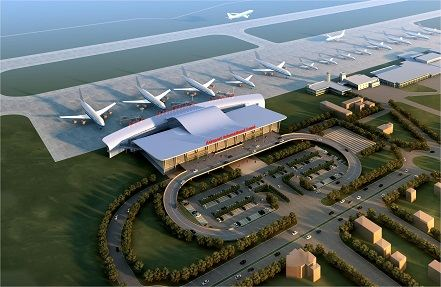
Source : https://aeroportdelome.com/web/actualites/presentation-de-laeroport-de-lome/
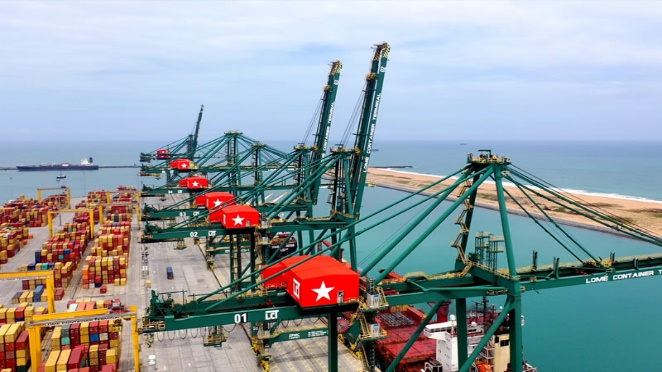
Source : https://www.togofirst.com/en/logistics/2802-9523-container-traffic-at-the-port-of-lome-grew-again-last-year

Source : https://impartialactu.info/togoagriculture-le-mifa-veut-inculquer-la-pratique-de-lirrigation-dans-les-habitudes/
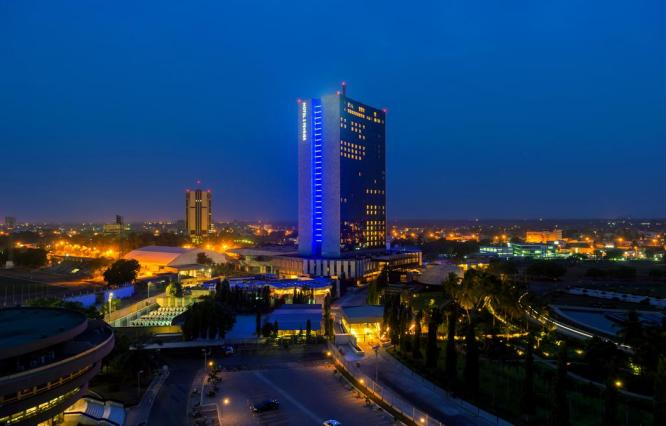
Source : https://allintogo.com/listing/hotel-2-fevrier-lome/
References
[1] Robert CORNEVIN, Histoire du Togo, Editions BERGER-LEVRAULT, 1969.
[2] https://fr.wikipedia.org/wiki/Économie_du_Togo
[3] https://www.voyage-togo.com/infos-pratiques/art-et-culture/la-culture-togolaise
[4] https://www.banquemondiale.org/fr/country/togo/overview#:~:text=Situation%20%C3%A9conom ique,dans%20le%20secteur%20des%20services.
[5] Têtêvi GODWIN TETE-ADJALOGO, Histoire du Togo: la palpitante quête de l'Ablodé, Editions Harmattan, 1993
[6] https://agriculture.gouv.tg/projets